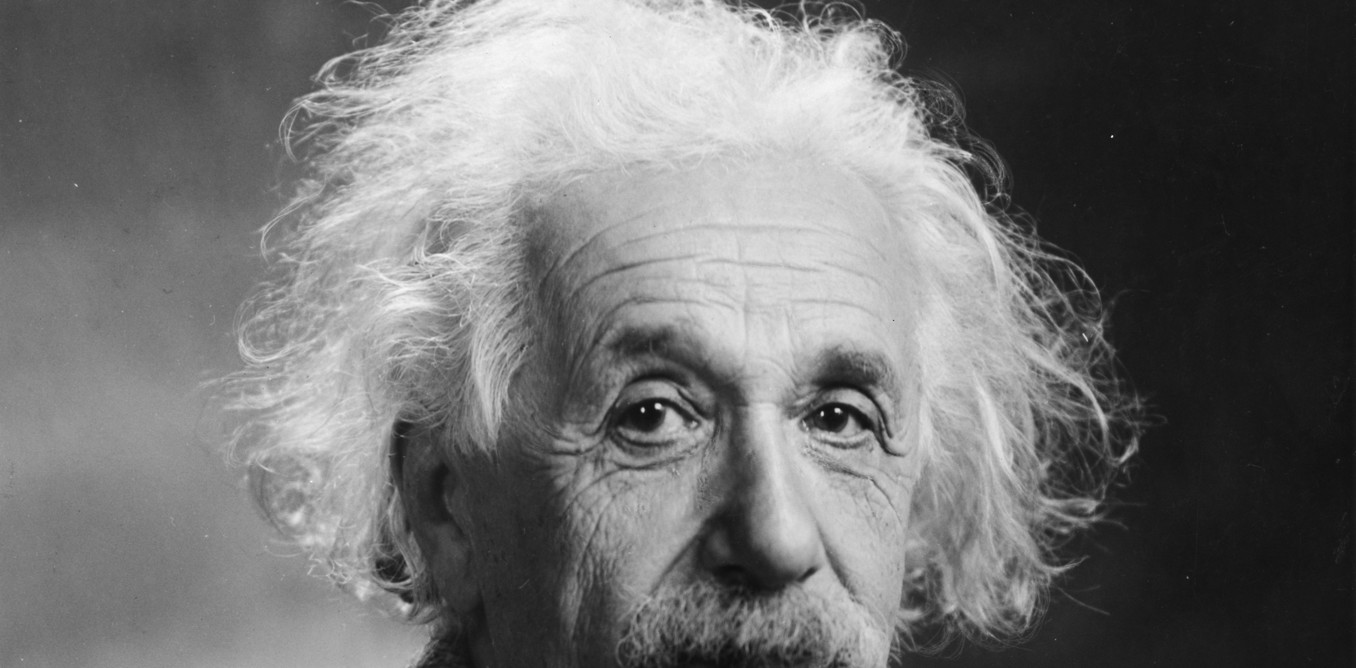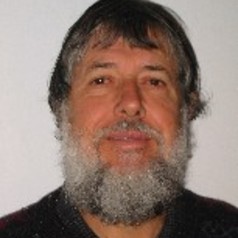The discovery of gravitational waves, announced earlier this year, marked the ultimate test of Einstein’s general theory of relativity. Einstein published his theory in the form of 10 abstract equations 101 years ago. The equations did away with Newton’s theory of gravity and replaced it with curved space and warped time.
Within weeks, Karl Schwarzschild found a solution to Einstein’s equations. His conclusion was astonishing and almost unbelievable: it told us that time depends on altitude and that matter can create holes where space and time come to an end.
A few months later, Einstein himself found a solution to his own equations. This solution described waves in the curvature of spacetime that would ripple out at the speed of light whenever masses accelerated around each other.
For its first half-century, Einstein’s theory was controversial. Were the waves real or mere mathematical artefacts? Do gravitational waves deposit energy? Are the black holes hypothesised by astronomers the same black holes that Schwarszchild predicted, or are they some other very dense agglomerations of matter?
Over the past 40 years the evidence has mounted that gravitational waves actually exist and that black holes are the real thing. Thousands of physicists believed the theory well enough to devote years inventing technology for making the exquisitely sensitive detectors required to prove the theory.
Yet when the waves were finally discovered, it still came as a shock. The shock was to suddenly know what for years had been a belief and a hope.
Suddenly we knew that the waves existed; we knew that our detectors could actually detect them and that the black holes out there are precisely the holes predicted by Schwarszchild. The discovery removed all remaining doubt that Einstein’s description of space, time and gravity is the best way we have of understanding the universe.
The first gravitational “sounds” detected revealed an unexpected number of very heavy black holes colliding throughout the universe. These discoveries are only explainable using Einsteinian thinking.
Scientific masterpiece
So 2016 is surely the year when Newtonian physics was consigned to the history books, to be replaced by Einsteinian physics.
When, then, does Newtonian physics – with its absolute time, fixed space and lack of gravitational waves – still dominates the school physics curriculum in most countries? Why aren’t Newton’s theories supplemented with Einstein’s more general ones to give students insight into our present best understanding of our universe?
Recently, 40 physicist-educators from around the world converged on the Gravity Discovery Centre in Western Australia to explore how school science can be re-imagined in the era of gravitational wave astronomy.
All shared the vision that we owe it to our children to teach our best understanding of the nature of our universe, rather than the obsolete 19th-century science that still dominates our school curriculum.
We heard about three countries that are pioneering Einsteinian physics in the classroom: South Korea, Norway and Scotland.
Korean physicist and educator Hongbin Kim suggested that South Korea’s economic growth and innovative culture is closely linked to its massive emphasis on education. This has led to it performing much better than Australia in the world rankings of maths and science education.
One reason for Einstein’s absence from school science classes is that many people imagine that his theories require enormous mathematical skills. The educationalists at the conference emphatically rejected this viewpoint.
Others argued that Einsteinian physics should be taught for its sublime beauty. Carlo Rovelli stated:
There are absolute masterpieces which move us intensely: Mozart’s Requiem, Homer’s Odyssey, the Sistine Chapel… Einstein’s jewel, the general theory of relativity, is a masterpiece of this order.
Yet Einsteinian physics is more than a jewel to be admired. Einstein’s seminal works brought us photons, digital cameras, lasers, black holes, time warps, quantum entanglement and solar panels. His discoveries changed and defined the modern world. Time magazine declared him the Person of the 20th Century.
Education researchers have overwhelming evidence that children are motivated and excited to learn Einsteinian physics, and equally that they are turned off by a stale and obsolete curriculum.
Jyoti Kaur, from the Australian Einstein-First team at the University of Western Australia, showed that Einsteinian physics brought year 9 girls into parity with boys in their enthusiasm for learning Einstein’s physics and in their attitudes to physics.
Entering a new era
Gravitational wave detection has brought us a new way of observing the universe. Australians played a major role in the discovery and shared the Breakthrough Prize for their achievement.
Now we can directly listen to extraordinary events and phenomena throughout the universe. We have already heard vast spacequakes created by huge merging black holes. In a few years as more detectors are built and improved, the universe will be online with daily signals that will help to reveal the entire history of matter in the universe, from the very first stars where the elements for life were created, to the ultimate death of matter itself in constantly growing black holes.
In Norway, Einstein’s general relativity is part of the upper secondary physics curriculum and many on-line learning resources are being developed.
In Scotland, the recent introduction of the so-called Curriculum for Excellence has seen Einsteinian physics firmly embedded in the senior physics national qualifications. Australia is lagging far behind and its slow decline in the rankings tell of lack of innovation in the curriculum.
So why isn’t relativity taught in Australia? One of the greatest impediments to re-imagining school science is the retraining of science teachers, whose training was devoid of Einsteinian physics.
Given that education drives innovation, governments and education departments should recognise that the failure to invest in updating the curriculum is a recipe for economic decline and loss of international competitiveness.
 David Blair's research on the Einstein-First education project is a collaboration between University of Western Australia, Curtin University, Edith Cowan University, the Gravity Discovery Centre Foundation and the Graham (Polly) Farmer Foundation. The project is funded by the Australian Research Council.
David Blair's research on the Einstein-First education project is a collaboration between University of Western Australia, Curtin University, Edith Cowan University, the Gravity Discovery Centre Foundation and the Graham (Polly) Farmer Foundation. The project is funded by the Australian Research Council.
Ellen Karoline Henriksen, University of Oslo, Norway, receives funding from The Research Council of Norway and from The Olav Thon Foundation for the work mentioned in this article.
Martin Hendry was an invited member of the SQA Physics Qualifications Design Team and Mathematics Excellence Group for the "Curriculum for Excellence" in Scotland, which has seen the introduction of significant elements of Einsteinian physics and Einsteinian thinking into the senior phase of the Scottish high school curriculum. From 2010 to 2012 he was partially funded by the UK Science and Technology Facilities Council as a Science in Society Fellow, leading an international programme of schools and public outreach on cosmology, astrophysics and relativity entitled "Exploring the Dark Side of the Universe".
This article was originally published on The Conversation. Read the original article.



 Ancient Mars may have had a carbon cycle − a new study suggests the red planet may have once been warmer, wetter and more favorable for life
Ancient Mars may have had a carbon cycle − a new study suggests the red planet may have once been warmer, wetter and more favorable for life  FDA Lifts REMS Requirement for CAR-T Cell Cancer Therapies
FDA Lifts REMS Requirement for CAR-T Cell Cancer Therapies  NASA Faces Major Workforce Reduction as 20% of Employees Prepare to Leave
NASA Faces Major Workforce Reduction as 20% of Employees Prepare to Leave  Trump Signs Executive Order to Boost AI Research in Childhood Cancer
Trump Signs Executive Order to Boost AI Research in Childhood Cancer  Tabletop particle accelerator could transform medicine and materials science
Tabletop particle accelerator could transform medicine and materials science  Lab-grown meat: you may find it icky, but it could drive forward medical research
Lab-grown meat: you may find it icky, but it could drive forward medical research  CDC Vaccine Review Sparks Controversy Over Thimerosal Study Citation
CDC Vaccine Review Sparks Controversy Over Thimerosal Study Citation  Is space worth the cost? Accounting experts say its value can’t be found in spreadsheets
Is space worth the cost? Accounting experts say its value can’t be found in spreadsheets  Neuren Pharmaceuticals Surges on U.S. Patent Win for Rare Disorder Drug
Neuren Pharmaceuticals Surges on U.S. Patent Win for Rare Disorder Drug  Trump and Merck KGaA Partner to Slash IVF Drug Costs and Expand Fertility Coverage
Trump and Merck KGaA Partner to Slash IVF Drug Costs and Expand Fertility Coverage  Cogent Biosciences Soars 120% on Breakthrough Phase 3 Results for Bezuclastinib in GIST Treatment
Cogent Biosciences Soars 120% on Breakthrough Phase 3 Results for Bezuclastinib in GIST Treatment  SpaceX Starship Test Flight Reaches New Heights but Ends in Setback
SpaceX Starship Test Flight Reaches New Heights but Ends in Setback  NASA Astronauts Wilmore and Williams Recover After Boeing Starliner Delay
NASA Astronauts Wilmore and Williams Recover After Boeing Starliner Delay  Eli Lilly’s Inluriyo Gains FDA Approval for Advanced Breast Cancer Treatment
Eli Lilly’s Inluriyo Gains FDA Approval for Advanced Breast Cancer Treatment 


































